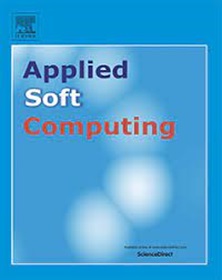基于 Sobol-PR 的深度耦合神经网络和遗传算法用于反应堆轻量化优化
IF 7.2
1区 计算机科学
Q1 COMPUTER SCIENCE, ARTIFICIAL INTELLIGENCE
引用次数: 0
摘要
我们提出了一种基于 Sobol-PR 法的深度耦合神经网络和遗传算法方法,用于反应堆轻质屏蔽优化。首先利用 Sobol 方法分析神经网络输入和输出之间的敏感性,然后利用这些敏感性动态调整遗传算法的适应度函数。同时,为了便于样本的评估和选择,引入了两个指标(精确度和召回率),其中精确度量化了神经网络的预测能力,召回率量化了遗传算法的优化效率。基于 Sobol-PR 方法的神经网络与遗传算法之间的深度耦合促成了 "计算-优化-重构-评估 "的集成框架,并将其应用于小型氦氙冷反应堆的轻质屏蔽设计。结果发现,神经网络和遗传算法的性能都得到了提高,神经网络的精度高达 99%,遗传算法的召回率高达 84%。与传统方法相比,新方法的理想解比例提高了 3.8 倍,优化深度提高了 3.2 倍。本文章由计算机程序翻译,如有差异,请以英文原文为准。
Deep-coupling neural network and genetic algorithm based on Sobol-PR for reactor lightweight optimization
We propose a deep-coupling neural network and genetic algorithm method based on Sobol-PR method for reactor lightweight shielding optimization. The Sobol method is first used to analyze the sensitivities between inputs and outputs of the neural network, and then these sensitivities are used to adjust the fitness function of the genetic algorithm dynamically. Meanwhile, two indicators (precision and recall rate) are introduced to facilitate the sample evaluation and selection, where the precision quantifies the prediction ability of the neural network, and the recall rate quantifies the optimization efficiency of the genetic algorithm. The deep coupling between the neural network and the genetic algorithm based on Sobol-PR method contributes to an integrated framework of “calculation-optimization-reconstruction-evaluation,” which is applied to the lightweight shielding design of a small helium-xenon-cooled reactor. It is found that the performance of the neural network and the genetic algorithm is improved, with the precision of the neural network reaches up to 99 % and the recall rate of the genetic algorithm reaches up to 84 %. Compared with the traditional method, the new method improves the ratio of ideal solutions by up to 3.8 times and the optimization depth by up to 3.2 times.
求助全文
通过发布文献求助,成功后即可免费获取论文全文。
去求助
来源期刊

Applied Soft Computing
工程技术-计算机:跨学科应用
CiteScore
15.80
自引率
6.90%
发文量
874
审稿时长
10.9 months
期刊介绍:
Applied Soft Computing is an international journal promoting an integrated view of soft computing to solve real life problems.The focus is to publish the highest quality research in application and convergence of the areas of Fuzzy Logic, Neural Networks, Evolutionary Computing, Rough Sets and other similar techniques to address real world complexities.
Applied Soft Computing is a rolling publication: articles are published as soon as the editor-in-chief has accepted them. Therefore, the web site will continuously be updated with new articles and the publication time will be short.
 求助内容:
求助内容: 应助结果提醒方式:
应助结果提醒方式:


